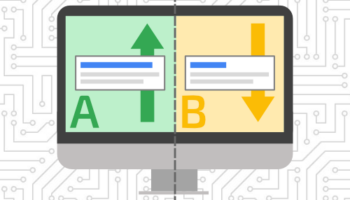What does a good PPC campaign look like? How do I make one? There are many components that must be considered when creating a new PPC campaign. The major components are: Keywords, Ad Groups, Ad Copy, Targeting, and Budget. Ignoring any aspect of the campaign can lead to failure.
Keywords
Keyword research or term discovery is the most fundamental part of designing a solid PPC campaign. Without a strong foundation of terms your campaign will suffer from several issues including mistargeted keywords, low impression volumes, poor clickthrough rates, and ultimately low conversions.
You should begin the term discovery process by establishing a short list of words and phrases that are relevant to your product or service. These words should be relatively broad and the phrases should be no more than 2 or 3 words long. Once you have this list, spend some time using these terms in various search engines. See what other sites and PPC ads show up when you search for them. Through this process you should be able to tell if your “short list” was on target for your product or if you need to change the list.
After you have a well targeted list that seems relevant to the sector you are in, spend some time expanding the list with longer words and phrases. There are several free and paid tools available on the web to assist you with this part of the process including:
Paid:
At this point you should have a long list of words and phrases with a good mix of both long and short phrases.
Ad Groups
Now spend some time reviewing your term lists. You should quickly notice that many of these terms are related to each other. Try to sort all of the terms you have collected into those related groups. These groups will form the basic ad groups for your campaign. This step is important because it will allow you to develop highly specific ad copy that incorporates several of the group terms. A little more on that later.
Ad Copy
Once you have your terms grouped together thematically, you can finally get down to the business of writing ad copy. This is a crucial step for the success of your campaign. You will have to create both a headline and two lines of body copy for every ad you create. The headline is restricted to X characters in length and each line of body copy can only be Y characters long.
Try to develop at least two ads per keyword group. The more the better but using at least two will allow you to test the different ad styles against each other. Maybe one ad promotes your service while the other promotes your brand or one ad uses the name of your company and the other does not. These kinds of A/B tests will allow you to constantly improve the quality of your campaign over time. If you notice one ad leads to more clicks or conversions than another you can try incorporating the most successful elements across the rest of the groups or campaigns.
Pay special attention to how you use the keywords from your term groups within the headline and body copy of your ads. Terms from your groups will be bolded within the ad copy when someone searches for them. The bolded keyword will generally lead to better click through rates for ads that use them well.
Geo-Targeting
Your campaign has a specific audience. When you configure your ‘Geo-Targeting’, you have a chance to narrow this down. Most paid search engine default to USA or USA/Canada. You can narrow this down to your specific segement or even target a different country entirely. The benefits of this are pretty obvious, if you are a regional business, you don’t want to waste your money where you have no clients.
Basic Budget Considerations
The two biggest factors when considering your PPC budget is Duration and Bidding. That is to say, how much do you want to spend and when? If your budget is too small, you will miss out potential customers. If you do not bid high enough, your ad will be positioned further down the page. If you bid too high, your potential gain from the new traffic could even be more expensive than the profit you will make off the sale. Because budgeting is so important, our next PPC post will be devoted entirely to this subject.
Conclusion
When all is said and done a PPC campaign is basically not that complicated. If you have a good mix of long and short keywords and term phrases, and they are sorted into related groups with specific ad copy that uses the terms themselves, you will be in good shape to have success with your campaigns. Here are some things to keep in mind:
You can’t think of everything. Between twenty and thirty percent of search terms are unique. Meaning no one has ever searched for them before. So all the keywords tools in the world won’t help you find those terms.
Think outside your own vocabulary. You may have certain conceptions about your products or services that the rest of the world hasn’t thought of. Other people probably use different words to say the same things.
Be ready to evolve. PPC campaigns “live and breathe” day to day. What works in the beginning, might not work at the end. Your chances for success will be greatest when you spend time periodically evaluating your progress to date and making changes when you need to. If a term gets too expensive for you, drop it. If you discover new related terms, add them to an existing group or create a new one.
Check back with us next time when we discuss some different approaches and strategies to budgeting for your PPC campaigns.






